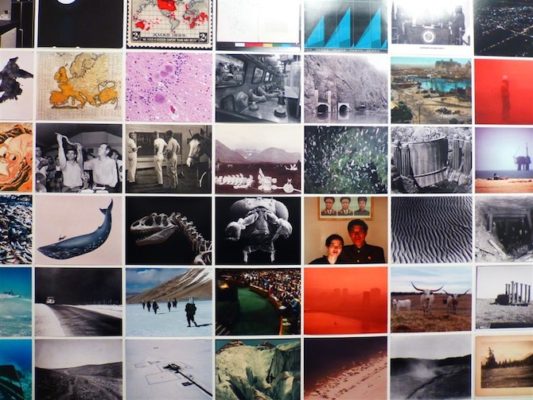Search
To search for an exact match, type the word or phrase you want in quotation marks.
A*DESK has been offering since 2002 contents about criticism and contemporary art. A*DESK has become consolidated thanks to all those who have believed in the project, all those who have followed us, debating, participating and collaborating. Many people have collaborated with A*DESK, and continue to do so. Their efforts, knowledge and belief in the project are what make it grow internationally. At A*DESK we have also generated work for over one hundred professionals in culture, from small collaborations with reviews and classes, to more prolonged and intense collaborations.
At A*DESK we believe in the need for free and universal access to culture and knowledge. We want to carry on being independent, remaining open to more ideas and opinions. If you believe in A*DESK, we need your backing to be able to continue. You can now participate in the project by supporting it. You can choose how much you want to contribute to the project.
You can decide how much you want to bring to the project.

One of the legacies of the Nobel Peace prize 2009, Barak Obama will leave us with, will be the innovations in the military-industrial complex: drones and the cyber-war. We can’t see them but they are there, like the camouflaged Islamic fundamentalists in the Sahara, the secret installations in Nevada, the spy satellites that orbit around our planet or the faces of the Guantánamo hostages.
Trevor Paglen exhibited in Metro Pictures, “The Last Pictures” , a long running project that culminated in the launch, last November, of a communications satellite of the company EchoStar from Kazakhstan. With the support of Creative Time and the help of scientists at MIT (Massachusetts Institute of Technology), Paglen produced a disc with one hundred images etched with a diamond point, enclosed in a golden plaque with the capacity to survive for billions of years, far beyond life on earth.
After a first selection of 30.000 images, Paglen and his team chose one hundred. Throughout this investigation they were in contact with a multitude of scientists from different fields, artists, mathematicians and philosophers. In the end, the images etched on the disc share the quality of not transmitting any information about themselves, non-images that in the future will be incomprehensible for those who might find the satellite artefact. So what we find in the selection ranges from Lascaux cave paintings to pictograms from South-East America, showing the Spanish genocide on horseback. From an atomic explosion to dinosaur prints, passing through a section of the tower of Babel by Brueghel retouched so that one can’t see one person, to a frame from ‘The Planet of the Apes’. Amongst all of them what stands out are; a page from an English-Volapük dictionary, an artificial language prior to Esperanto; the signal Wow! as written in the code received in August 1977, suggesting life beyond our solar system; another frame from a Japanese science fiction film showing star shaped aliens and the image “Demonstration of Eating, Licking and Drinking”, included in the Voyager, the only other mission comparable to this one. This final image made by the very scientists who participated in the Voyager project is disturbingly sexual. In it, a woman licks an ice-cream, a man bites into what seems to be a sandwich, while a third pours a stream of water into his mouth.
At the beginning of the exhibition, there was a photograph, also included in the selection for the satellite, of the back of the ‘Angelus Novus’, the seminal drawing by Paul Klee that in its day was owned by Walter Benjamin. On it we see the stamps of the Museum of Israel, current owner of the piece and the Museum of Contemporary Art Chicago, for an exhibition that was made in 1996. The historic angel, propelled from behind into the future, through the tumult of progress, turns its back on us. So we enter into the exhibition as if entering into the past, into a cave full of paintings, images that at one time were present, where the context and meaning have been lost. On the other side of the wall holding the ‘Angelus Novus’ there is another of Trevor Paglen’s photographs, this time of the data centre of the National Security Agency, where supposedly all our emails, bank transfers and receipts are stored; a colossal hard drive.
This is the disconcerting present that we live in, never knowing exactly what’s going on, where the angel continues, dumbstruck, launched into the future. For centuries, vision, progress and war have gone hand in hand, and for Paglen they seem to have led to the invisible. Not just in the images, divested of their meaning, where secrets and unknowns are exhibited, but also for the technological condition of our societies, where waves and rays encircle us, the unrecorded flux of radioactivity and banking details. Invisibility is the other face of saturation; advertising and the internet demonstrate this process of disappearance; our minds don’t process, images are lost awash in a sea of altered contexts, multiplied, and we can no longer understand or see, blinded by the advance of progress. Virilio foresaw the industrialization of the non-gaze, where the machine of vision, ties the image to the code, and to put it one way, live streaming dominates real space (distance) and pre-recorded representation. Virilio writes after the experience of the first Gulf War and Reagan’s “Star Wars”. Twenty years and several wars later, with Bin-Laden finally eliminated, with one of the most amazing non-images as visual proof, Paglen invites us to think about what’s invisible about this uncertain contemporaneity.

Xavier Acarín is fascinated with experience as the driving force of contemporary culture. He has worked in art centres and cultural organizations both in Barcelona and New York, focussing in particular on performance and installation.
"A desk is a dangerous place from which to watch the world" (John Le Carré)